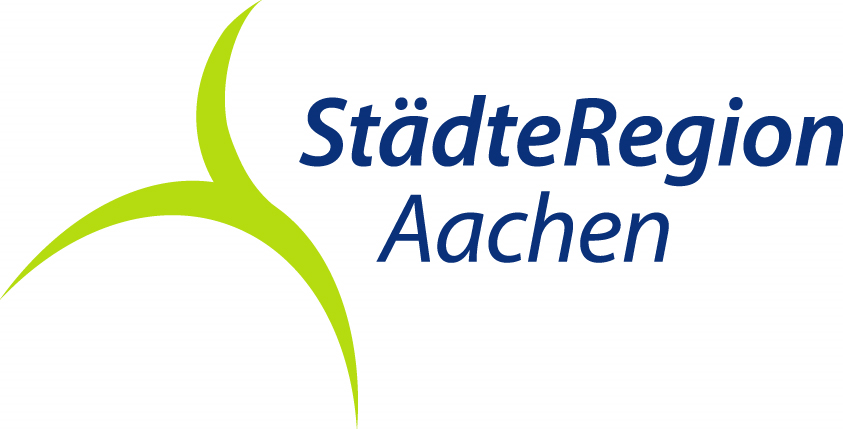Grenzlandhighlights
Aachen
The Aachen Forest obviously doesn't care much about borders. We can also switch seamlessly between the German, Belgian and Dutch sides on attractive paths far away from traffic, without leaving the extensive cross-border forest belt. At the beginning, we pass the landmark of the Aachen Forest: at 133 meters, the telecommunications tower, also known as the "Mulleklenkes", rises up from the Karlshöhe and marks the ridge in the southwest of the city, visible from afar.
Historical and contemporary lines meet at a crossroads in the middle of the forest: we can identify today's German-Belgian border by the hidden boundary stones along the path. A closer look at the Landgraben reveals an even older borderline. From the 14th century, the people of Aachen secured the rural areas and the forest outside the city walls with an earth wall and a dense beech hedge. When the city was fortified all around with the 70-kilometre-long green border, it was marked from 1611 with boundary stones engraved with an eagle, the Aachen city coat of arms. Remnants of the earthworks, gnarled mighty beech trees from the former hedge line, which we encounter here and later in an idyllic hillside passage, an eagle stone and also a former watchtower at the Beeck tower can still be found today as witnesses to the old border history on our hike.
The old pilgrimage route from Aachen to Moresnet-Chapelle, part of the Way of St. James, leads us to the Königswald forest. After Aachen, Kelmis, Montzen and Moresnet were constantly at loggerheads here over common usage rights, the area was placed under the jurisdiction of the Dukes of Burgundy as the "Royal Forest" in 1615. Special boundary stones bear the Golden Fleece or St. Andrew's Cross, signets of the Habsburg rulers of the time.
Another historical yet visible border runs straight up to the Dreiländerpunkt. The point beckons with attractions: Dreiländergrenzstein, the highest point in the Netherlands, lookout towers and plenty of opportunity for young and old to take a break.
At the border stone made of bluestone, we switch easily between three countries. For over 100 years there were even four. Here too, differences over usage rights were the deciding factor. In this case, Prussia and the Dutch were unable to reach an agreement in 1815 over the lucrative galmei mining in Kelmis. Thus, the mini-state of Neutral Moresnet was created, a triangle of 350 hectares between Dreiländerpunkt, Kelmis and the Liège road. The zinc industry and liquor smuggling led to economic prosperity, but the decline of the mine in 1895 heralded the end of the special political position. In 1919, Neutral Moresnet became part of Belgium at the request of the inhabitants.
Highlights along the route:
1 Mulleklenkes telecommunications tower
2 Landgraben, border beech trees, eagle stones on the Bittweg
3 Burgundy stones
4 Neutral Moresnet border
5 Three-country point (D/B/NL), Baudouin tower, highest point in the Netherlands
6 Beeck tower
7 Landgraben, border beech trees on the Philippionsweg





























